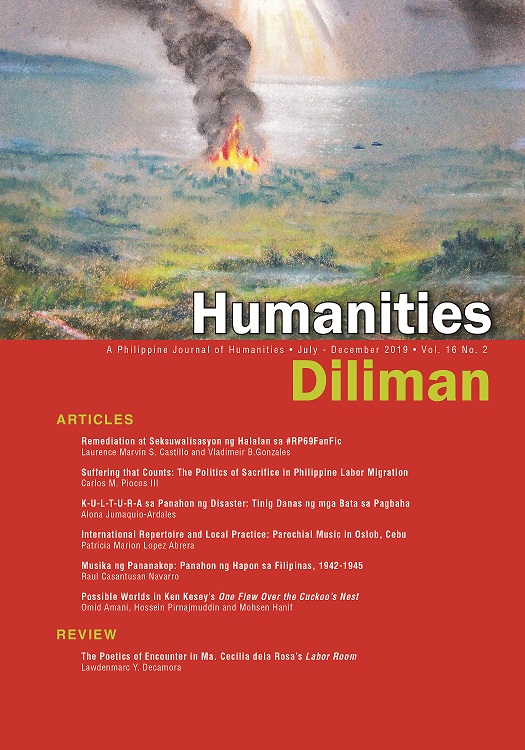Musika ng Pananakop: Panahon ng Hapon sa Filipinas, 1942-1945
Abstract
In 2020, the world will remember the 75th year of the end of the Second World War. During the last seventy four years, very few studies on the cultural implications of the Japanese occupation of the Philippines had come out. And glaringly left out in past narratives was the role music played as war propaganda.
The three centuries of Spanish and the four decades American colonization of the archipelago brought about Hispanization and Americanization of the Filipino consciousness, respectively. The succeeding three years of Japanese invasion effected comparable efforts at cultural manipulation and active propagandizing to sway the Filipinos’ minds to readily accept the state they found themselves in—on the verge of “Asianizing” and “Filipinizing”—under the banner of the much publicized, Japan-led Greater East Asia Co-Prosperity Sphere. Behind the glamorized sloganeering of the imperial Japanese, the Filipinos were caught choosing between pro- and anti-Japanese outward stance while nurturing their lingering pro-American consciousness.
This research will look into the historical and cultural role music played between the years 1942 and 1945. A critical/bio-political framework will set the underlying tone of the paper. Music books published and prescribed for basic education use will be considered as primary data source. Gunka, or Japanese military/war music, will be analyzed to understand how the Japanese soldiers viewed the war they waged against the Filipinos. This paper will also look into the contribution of some renowned Filipino musicians/composers that helped the Japanese localize the sensibility of their propaganda.


